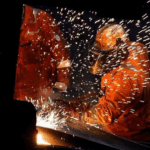Australia’s beloved beaches are at the center of a heated debate as the growing popularity of beach cabanas, or large tents, sparks tension among beachgoers. The once tranquil shores are now dotted with rows of polyester shade covers, blocking ocean views and encroaching on valuable sand space.
For Sydneysider Claire, 30, the rise of the cabana craze has added a new level of frustration to her beach visits. “It’s chokkas. They’re all over the place,” she told the BBC. With summer heat driving people to the coast, Claire now faces the challenge of finding space on the beach, as the cabanas take up large sections of sand. Some tents are abandoned for hours, left empty after being set up at dawn, adding to the sense of clutter.
This growing issue has sparked a nationwide debate, with heated discussions on social media, opinion pieces, and even television segments. The controversy, dubbed “Cabanagate,” has even caught the attention of Prime Minister Anthony Albanese. Critics, such as anti-cabana crusader Nic Salerno, argue that the tents are an unfair occupation of public space. “When you’re polluting the beach with your four cabanas next to each other, where is Guncle Nic going to go?” he said on a talk show.
Supporters of the trend, however, defend the cabanas as a necessary protection from Australia’s harsh sun. With the country being the melanoma capital of the world, many see the shade tents as a safety measure. “I just don’t want to die of skin cancer by 30,” one TikTok user wrote in support of the trend. The Cancer Council of Australia also backs the use of cabanas as a way to protect against harmful UV rays.
Despite these arguments, critics claim that many beachgoers use the cabanas more for convenience than sun safety, accusing them of selfishly reserving beach space. Some admit that it’s not just about shade but securing the “prime piece of real estate” on busy beaches. Television presenter Davina Smith explained that she carefully selects her spot early in the day, stating, “There’s a lot of research that goes into this.”
Prime Minister Albanese weighed in on the debate, calling the trend “not on.” He emphasized that beaches in Australia are a shared public space, and the rise of cabanas violates the principle of accessibility. Lifeguards have also expressed concern, saying the tents hinder their ability to monitor the shore effectively.
The cultural divide over cabanas highlights deeper tensions around Australia’s coastline. Australians take pride in their egalitarian beach culture, viewing the coast as a democratic space where social hierarchies dissolve. Experts argue that the increasing use of private cabanas could further alienate ordinary families from enjoying these public areas, intensifying class tensions.
As the “Cabanagate” saga continues, Australians are left grappling with the question: how much space should one person take up on the beach before it’s too much?
















